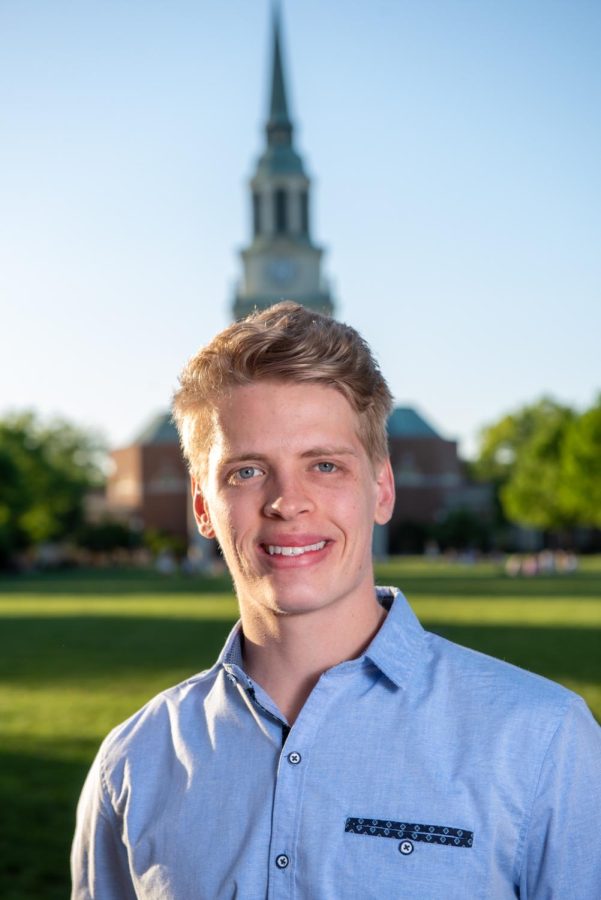Biophysics: Cameron May
Cameron May grew up in a family of medical professionals — from doctors to nurses to surgeons. Now, as he prepares to graduate with a biophysics major, he hopes to one day work in medicine, too.
“I was always doing little projects as a kid,” May said. “I started out with really simple stuff like making a freshwater extractor from salt water, where you leave something in the sun and then the freshwater evaporates and drips down into a cup.”
When he got to Wake Forest, May wanted to pursue physics and pre-medicine — two of the most difficult paths a student can take. In the end, he found that he could best achieve this through the biophysics major.
“Biophysics is like a physics minor, with a couple of biophysics classes, and then all of the pre-med [requirements] are built into it,” May said.
In his time at Wake Forest, May has done research on protein transition states and the effects of nitrous oxide on blood vessels. Last summer, he went abroad to shadow drone operators in the Peruvian Amazon, where he and his team used drones equipped with laser imaging, detection and ranging (LIDAR) technology to map deforestation as a result of gold mining.
“The drones we used had lasers on them, and you fly over a bunch of objects, and a laser would put a color and location of every single object,” May said. “And then you can make these big, 3D models.”
Traveling downstream on the Madre de Rios River in southeastern Peru, May watched as gold miners worked in harmful conditions to make a living.
“To extract the gold from a mixture of rock and gold, you put in mercury, which is obviously really toxic,” May said. “And what [the gold miners] do is they just put it in a big oil barrel and they mix it with their legs. And they’re just standing in the mercury — which obviously is not good for you.”
Because mercury mixes so well with gold, miners will use it to create a ball of mercury and gold and then — because of mercury’s low boiling point — burn it off, leaving behind the gold. In addition to the deforestation that is used to clear areas for mining, the use of mercury itself has environmental consequences, too.
“The mercury goes everywhere, and it’s awful for the environment, awful for the people working it,” May said. “You’d be going down the river in a boat, and you’d just see people standing in mercury mixing things.”
This summer, May will take up an internship at the National Institutes of Health in Baltimore, Md. Although he won’t know exactly what kind of research he’ll be doing until he gets there, he’s excited to find out.
“One of the cool things that I’ve seen that they’ve done is they can take a rat brain, for instance, and take a bunch of slices of it — like physical slices — and then scan each slice,” May said. “And in each slice, you can see a neuron, and then between each neuron layer, you can connect the neurons. And then you can use an AI model to speed that up. So then you get every single connection between every single layer, and then you put it all together. And then you can have a 3D map of a frame on a computer, which is really cool.”
May hopes to one day combine medicine with AI, possibly in the form of a startup. He is excited by ongoing projects such as using AI to enhance patient care through chatbots or to diagnose breaks in CT scans.
